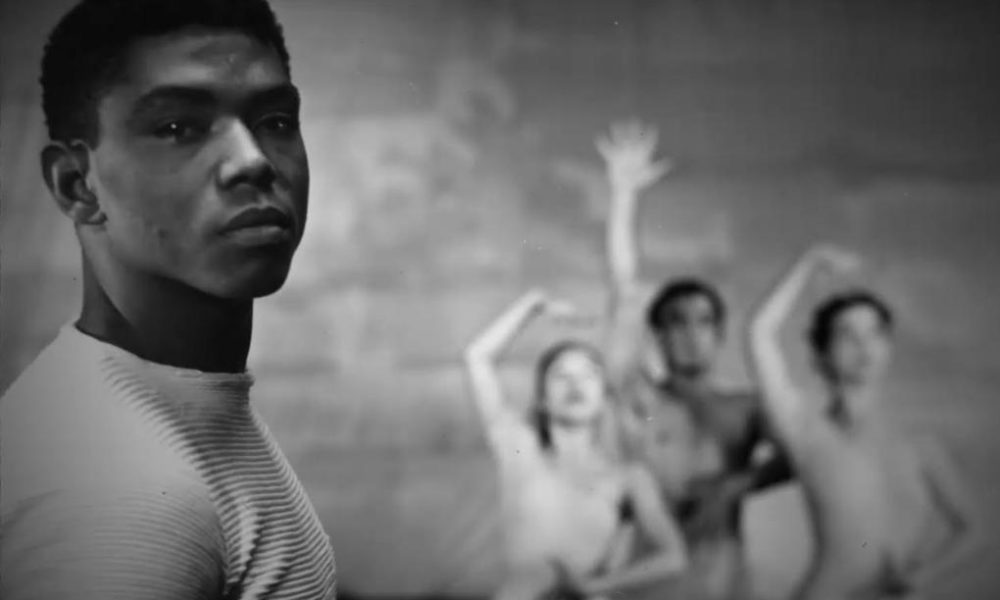
NEW YORK – When it comes to the history of dance in America, few names loom larger than that of Alvin Ailey.
A trailblazing pioneer of the art form who blended styles of modern dance, ballet, and jazz into breathtakingly theatrical presentations that explored and uplifted Black experience in American culture, his works earned him accolades and honors throughout a long career that gave him name recognition even among people with little or no interest in dance.
His choreographed masterpieces became touchstones within the medium, with many of them still among the most frequently remounted dance productions more than 30 years after his death, and the company he founded in 1969 – the Alvin Ailey American Dance Theater – remains one of the most lauded and prestigious dance organizations in the world today.
Yet despite his status as one of the most famous American choreographers of the twentieth century, there are many today, even among the aficionados of dance, who would be hard-pressed to tell you much about his life.
That’s not entirely due to neglect or lack of interest, as a new documentary by filmmaker Jamila Wignot – simply titled “Ailey” – helps us to understand. Ailey was a genius who kept his private life as far out of the spotlight as possible.
As a Black gay man, he was keenly aware of his doubly marginalized status, and rather than inviting controversies that might overshadow the creations he worked tirelessly to bring into the world, he preferred to let the work itself become his public identity. He even took measures to obscure himself after death, ensuring that his passing from AIDS (in 1989, at the age of 58) would be reported as the result of a terminal blood disease.
In Wignot’s dreamily eloquent film, she presents us with a portrait of a man who seemingly sublimated his entire being into the creation of his art, documenting Ailey’s magnificent career with a wealth of archival footage and interviews.
Along the way, she also offers exploratory deep dives into the creation and legacy of some of his most iconic ballets, illuminating some of the themes that wove themselves into his body of work throughout his life. Finally, she follows the creative process as dancers at today’s Ailey American Dance Theater work on a new production of “Lazarus,” one of the late master’s most renowned pieces.
In the process, she delivers the biographical facts of his life side by side with the artistic passions that drove him, and places it all in the context of the larger cultural history of late 20th Century America – as well as how Ailey’s legacy continues to resonate within the changing social dynamics of our own time.
Yet throughout this feast of information, illuminating the facts and counterpointing the remembrances of those who worked at his side, Wignot also gives us Ailey’s own commentary. Culled from recordings and interviews made during his lifetime, this posthumous self-narration of his own story lets us glean for ourselves what insight we may.
In retrospect and alongside the memories of his surviving companions, Ailey’s own words tell us more about the man himself than he perhaps meant to do when he said them, inserting a layer of intimacy within the vast scope of the biography as it unfolds, and the film is all the richer for it.
It should come as no surprise that Wignot has painted such a reverent, yet deeply personal portrait of her subject. She’s been inspired by Ailey’s work – and his vision – since attending a performance of the Ailey Dance Theater during her sophomore year at Wellesley College more than two decades ago. Her admiration is evident from the way she gushes about Ailey in her director’s statement about the film.
“Nothing prepares you for the experience of Ailey,” she says. “The emotional, spiritual, aural, and visual overwhelm the senses… Ailey’s dances—celebrations of African American beauty and history—did more than move bodies; they opened minds.
His dances were revolutionary social statements that staked a claim as powerful in his own time as in ours: Black life is central to the American story and deserves a central place in American art and on the world stage. A working-class, gay, Black man, he rose to prominence in a society that made every effort to exclude him. He transformed the world of dance and made space for those of us on the margins—space for black artists like Rennie Harris and me.”
The Rennie Harris to whom Wignot refers is the founder of Rennie Harris Puremovement, a hip-hop dance theater company based in Philadelphia, who as guest choreographer of the AADT production of “Lazarus” is featured prominently in the film. He is just one of many professional dance veterans whose voices, featured throughout, seem united in singing the praises of Ailey’s passion, creative power, and timeless aesthetic – and Wignot makes sure we don’t have to merely take their word for it.
Like most dance documentaries – or good ones, anyway – the greatest gift of “Ailey” is the chance to see the dancers in motion. It’s a film full to the brim with electrifying footage of some of Ailey’s masterworks, giving us a rare opportunity to revel in the sheer visual poetry of his style. In pursuit of his ideal to capture “truth in movement,” he built choreographed expressions of the Black American experience, executed with grace, strength, and unparalleled beauty.
His work celebrated that history while bearing witness to its injustice, with an emphasis on the dignity, humanity, and hope that makes it possible to look toward a transcendent future for all. It was, of course, social activism through art, though Ailey and his original dancers might not have exclusively intended it that way, and it is not an overstatement to say that it changed the world. Wignot cannily gives us the privilege of seeing just enough of it to stand as testament to its impact, and more than enough to make us want to grab the next opportunity to see the Ailey American Dance Theater perform in person.
In the meantime, you are encouraged to seek out “Ailey,” which premiered in NYC on July 23 and expands to theatres nationwide on August 6, to whet your appetite. It’s a documentary that succeeds far more than many others in telling a real-life story that feels authentic, and despite the carefully-guarded secrecy of its elusive subject, it presents as true and complete an impression of him as we are likely to get.
Outside of watching his work, that is.







